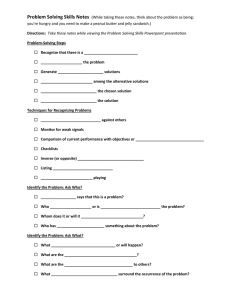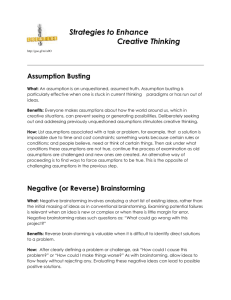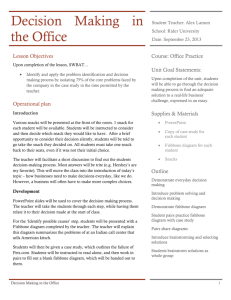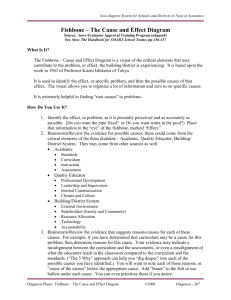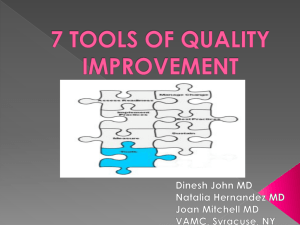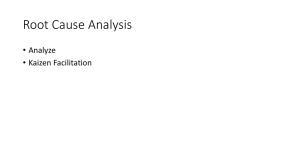rf-fishbone-tool-en - Health Quality Ontario
advertisement
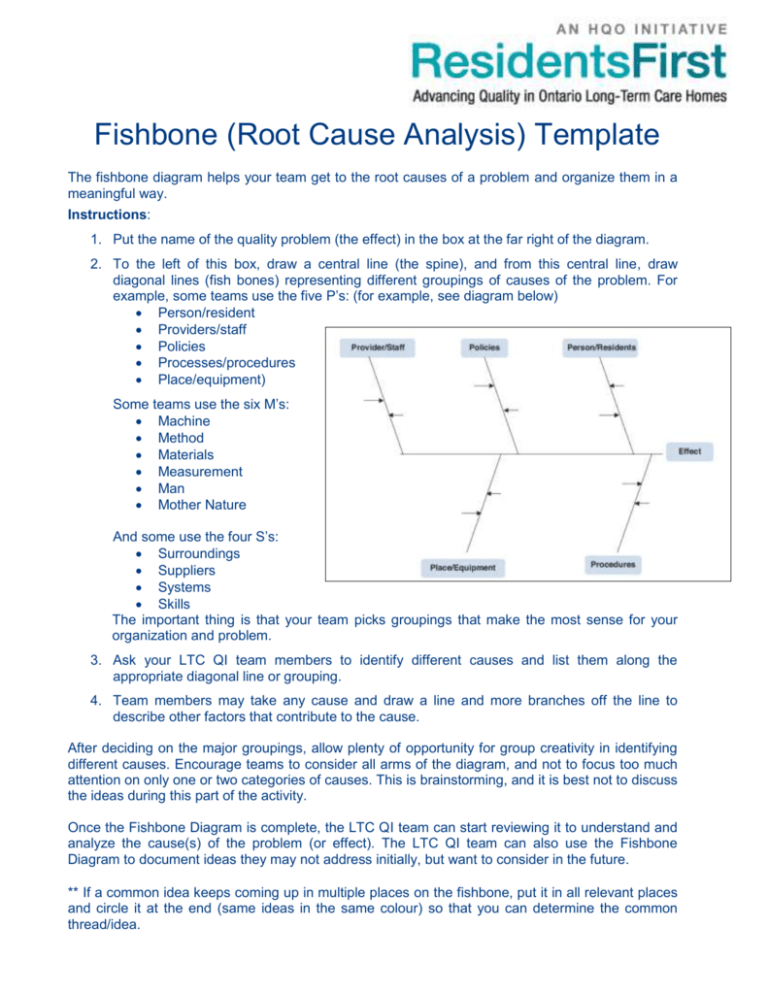
Fishbone (Root Cause Analysis) Template The fishbone diagram helps your team get to the root causes of a problem and organize them in a meaningful way. Instructions: 1. Put the name of the quality problem (the effect) in the box at the far right of the diagram. 2. To the left of this box, draw a central line (the spine), and from this central line, draw diagonal lines (fish bones) representing different groupings of causes of the problem. For example, some teams use the five P’s: (for example, see diagram below) Person/resident Providers/staff Policies Processes/procedures Place/equipment) Some teams use the six M’s: Machine Method Materials Measurement Man Mother Nature And some use the four S’s: Surroundings Suppliers Systems Skills The important thing is that your team picks groupings that make the most sense for your organization and problem. 3. Ask your LTC QI team members to identify different causes and list them along the appropriate diagonal line or grouping. 4. Team members may take any cause and draw a line and more branches off the line to describe other factors that contribute to the cause. After deciding on the major groupings, allow plenty of opportunity for group creativity in identifying different causes. Encourage teams to consider all arms of the diagram, and not to focus too much attention on only one or two categories of causes. This is brainstorming, and it is best not to discuss the ideas during this part of the activity. Once the Fishbone Diagram is complete, the LTC QI team can start reviewing it to understand and analyze the cause(s) of the problem (or effect). The LTC QI team can also use the Fishbone Diagram to document ideas they may not address initially, but want to consider in the future. ** If a common idea keeps coming up in multiple places on the fishbone, put it in all relevant places and circle it at the end (same ideas in the same colour) so that you can determine the common thread/idea.

